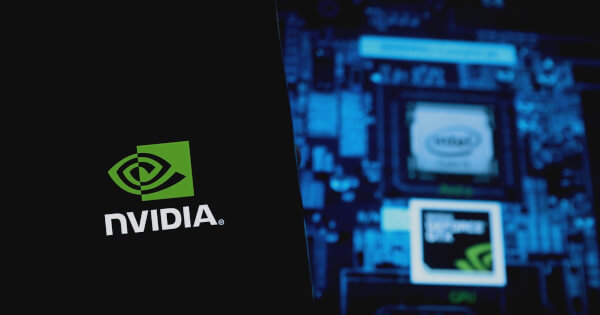Zach Anderson
Jul 17, 2024 03:05
NVIDIA introduces an AI agent using cuOpt and NIM to tackle supply chain optimization challenges, enhancing decision-making and efficiency.
Enterprises face significant challenges in making supply chain decisions that maximize profits while adapting quickly to dynamic changes. Optimal supply chain operations rely on advanced analytics and real-time data processing to adapt to rapidly changing conditions and make informed decisions.
Linear Programming with NVIDIA cuOpt
With NVIDIA cuOpt and NVIDIA NIM inference microservices, companies can harness the power of AI agents to improve optimization, with supply chain efficiency being one of the most compelling and popular domains for such applications. In addition to the well-known vehicle routing problem (VRP), cuOpt can optimize linearly constrained problems on the GPU, expanding the set of problems that cuOpt can solve in near-real time.
The cuOpt AI agent uses multiple LLM agents and acts as a natural language front end to cuOpt, enabling seamless transformation of natural language queries into code and optimized plans.
Revolutionizing Supply Chain Management
Supply chains are complex and increasingly challenging to manage due to dynamically changing factors such as inventory shortages, demand surges, and price fluctuations. Yet supply chain optimization yields significant benefits.
According to research, organizations expect to save $37M by being able to react faster to supply chain disruptions. This equates to 45% of the average cost of supply chain disruptions in 2022. Disruptions in the supply chain pose substantial economic challenges, costing organizations globally an average of $83M annually. Larger organizations naturally incur greater costs.
On average, companies with between $500M and $1B in annual revenue incurred costs of $43M, whereas firms with $10-50B in revenue faced costs of $111M.
Optimized Decision-Making
With dramatic improvements in solver time, linear programming enables significantly faster decision-making, which can be applied to numerous use cases across various industries, including:
- Resource allocation
- Cost optimization
- Scheduling
- Inventory planning
- Facility location planning
Here are some example use cases for industries that require running what-if scenarios through data retrieval and mathematical optimization:
Manufacturing, Transportation, and Retail
A customer requests an additional 30 units, but there will be a delay in the supply delivery by a week due to weather conditions. What is the impact on the fulfillment rate, and how would this impact your allocation plan to minimize production, transportation, and holding costs?
Healthcare and Pharmaceutical
The global demand for healthcare providers and medications is growing faster than estimated. How can a hospital and pharmaceutical company dynamically re-assess the impact of medical supplies to maximize profit?
City Planning
As a consequence of urban development planning, there is an influx of residents in certain neighborhoods, causing traffic congestion. How can the city determine how many public transportation stops to add to maximize public transportation usage and reduce the number of individual cars?
Conclusion
Sign up to be notified when you can try the cuOpt AI agent with a free 90-day trial of NVIDIA AI Enterprise.
Try NVIDIA cuOpt, NVIDIA-hosted NIM microservices for the latest AI models, and NeMo Retriever NIM microservices for free on the API catalog.
Image source: Shutterstock
Credit: Source link





















 Bitcoin
Bitcoin  Ethereum
Ethereum  Tether
Tether  Solana
Solana  XRP
XRP  Dogecoin
Dogecoin  USDC
USDC  Lido Staked Ether
Lido Staked Ether  Cardano
Cardano  TRON
TRON  Avalanche
Avalanche  Shiba Inu
Shiba Inu  Wrapped stETH
Wrapped stETH  Wrapped Bitcoin
Wrapped Bitcoin  Toncoin
Toncoin  Sui
Sui  WETH
WETH  Bitcoin Cash
Bitcoin Cash  Chainlink
Chainlink  Pepe
Pepe  Polkadot
Polkadot  Stellar
Stellar  LEO Token
LEO Token  NEAR Protocol
NEAR Protocol  Litecoin
Litecoin  Aptos
Aptos  Wrapped eETH
Wrapped eETH  Uniswap
Uniswap  USDS
USDS  Cronos
Cronos  Hedera
Hedera  Internet Computer
Internet Computer  Ethereum Classic
Ethereum Classic  Bonk
Bonk  Bittensor
Bittensor  Render
Render  Ethena USDe
Ethena USDe  POL (ex-MATIC)
POL (ex-MATIC)  WhiteBIT Coin
WhiteBIT Coin  Dai
Dai  MANTRA
MANTRA  Artificial Superintelligence Alliance
Artificial Superintelligence Alliance  dogwifhat
dogwifhat  Arbitrum
Arbitrum  Monero
Monero  Stacks
Stacks  Filecoin
Filecoin  OKB
OKB 
